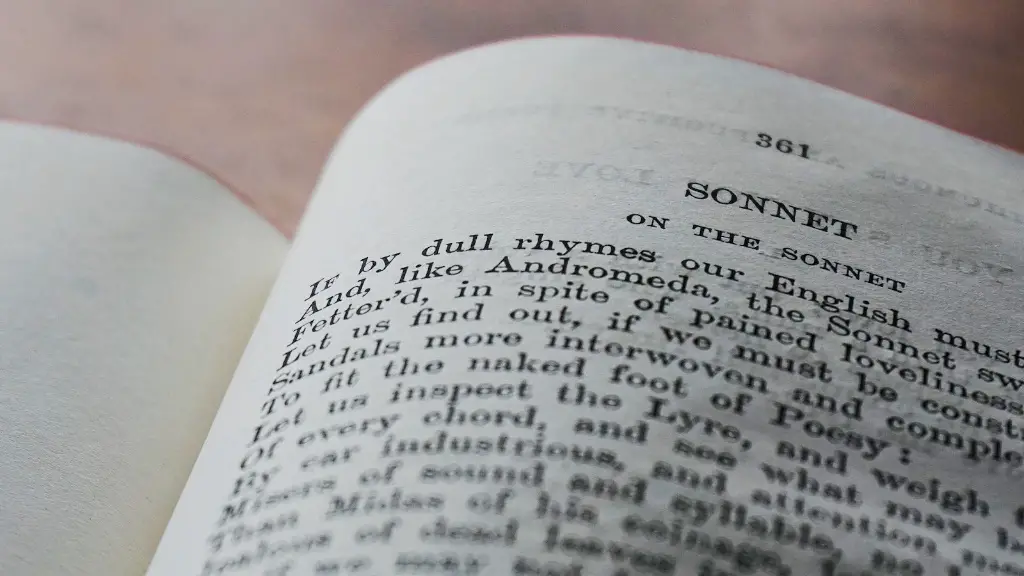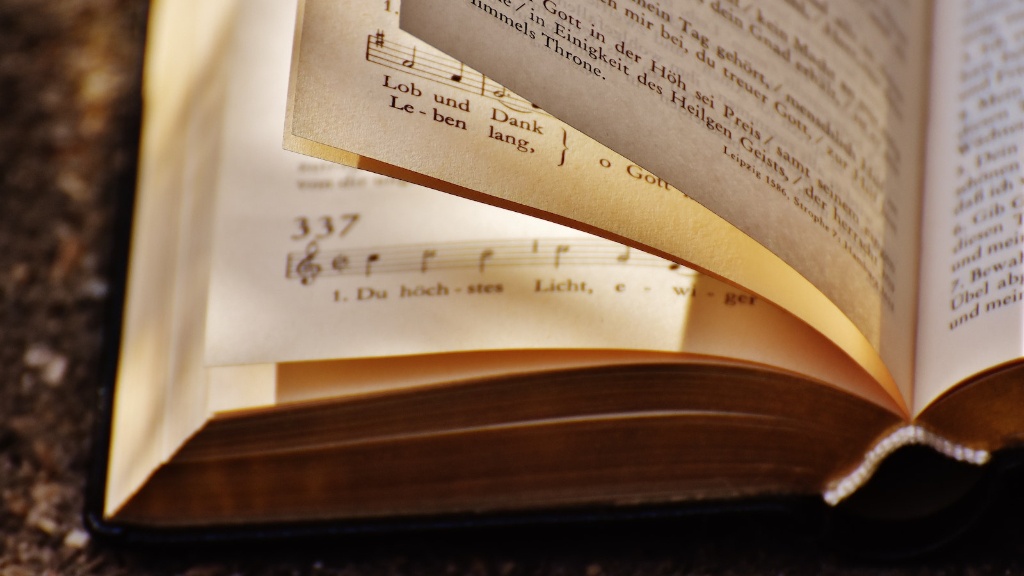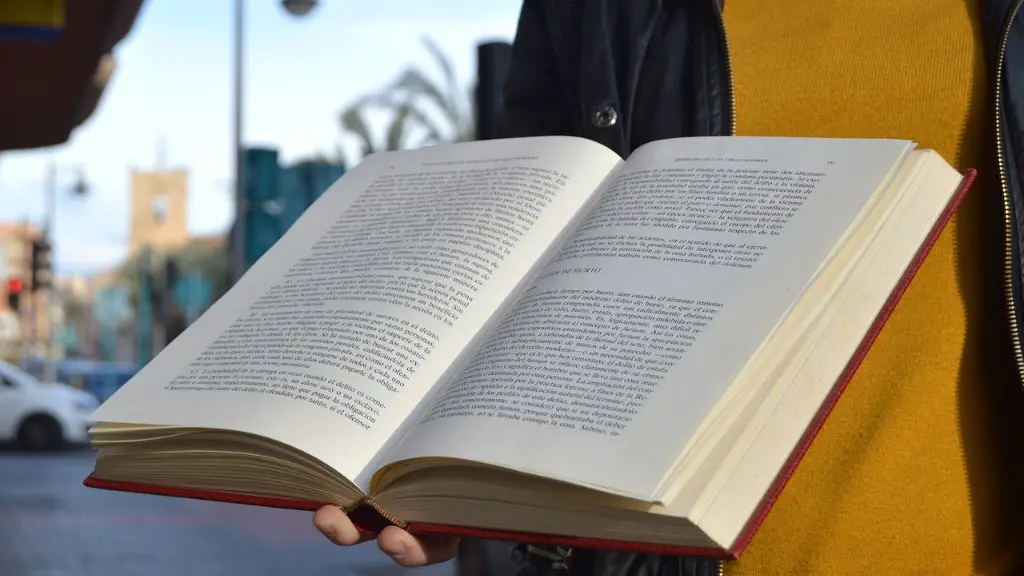Primal Origins of Modernist Poetry
Modernist poetry is distinguished by its radical breaks with classical poetic forms and its innovative exploration of language and ideas. It is widely accepted that the rise of modernist poetry coincided with the proliferation of advances in technology, literature, and philosophy. But what might not be immediately obvious is that the roots of these movements are steeped in the private meditations of many famous writers and poets prior to the twentieth century.
In particular, the Romantic poets of the eighteenth century had a profound hand in formulating the foundations of modernist poetry. Specifically, romantic poets like William Wordsworth and Shelley were ardent critics of industrialization and proponents of a new form of philosophy that sought to replace traditional Western values with a more inward contemplation.
This inward contemplation of the human experience, including man’s relationship with the world and his innermost emotions, was to form the basis of almost all Romantic poetry. Despite this, the rejection of traditional Western values caused much of the Romantic poetry to be received with hostility by the mainstream when it was first published.
Nevertheless, this form of poetry found an audience, however niche it might have been, and many of its stylistic elements passed into other forms of literature, particularly those seeking to express the same inner musings as the Romantics. It is in this way that the Romantic poets set the foundations for the this kind of poetry to come into its own in the twentieth century.
The advent of the modernist literary movement further helped this cause. This movement rejected many of the formal conventions of Classical writing and instead sought to use concrete, lyrical language to express one’s inner emotions and experiences. Influential poets such as TS Eliot and Ezra Pound helped to popularize this technique, and their work was widely acclaimed for its originality and complexity. It is often argued that the innovations of these poets helped set the foundations of modernist poetry in the present day.
The twentieth century also brought about changes in terms of the purpose of literary expression. Prior to this, literary works were often seen as a form of amusement or entertainment. But in contrast, the works of the modernist poets began to explore far more complex issues such as death, love, and the human condition. This expansion of the purpose of literature in turn helped to inject a greater level of realism into the world of poetry and literature as a whole.
It is clear, then, that the development of modernist poetry was the product of a combination of factors, from the private musings of the Romantic poets to the socio-cultural changes that took place in the twentieth century. These developments, in turn, reflected a greater trend in the world of literature, one in which a greater respect and appreciation was given to the works of modernist poets and a greater level of realism was brought into the world of literature and poetry as a whole.
The Development of Stream of Consciousness
An iconic element of modernist poetry is the technique of stream-of-consciousness. This technique, which uses a character’s innermost thoughts, emotions and memories, was first popularized by the influential writers James Joyce and Virginia Woolf. It captures the chaotic nature of the mind and has become a core tool in modernist cycles.
The development of this technique is closely linked to the philosophical advances of the 19th century, namely the development of psychodynamics, a field of psychology that sought to analyze psychological processes on both a conscious and unconscious level. By exploring the hidden forces of the mind, psychodynamics sparked a newfound interest in understanding the human condition on a much deeper level.
Joyce and Woolf’s works explored these concepts in great detail, and their use of stream of consciousness provided the reader with a close insight into their characters’ inner lives. This grip on the inner workings of the mind allowed Joyce and Woolf to tackle more potent issues such as suicide and mental illness, which had previously been considered too taboo to be discussed in mainstream literature.
By combining the Romanticists’ inwardly contemplations with the newly discovered revelations of psychodynamic psychology, Joyce and Woolf created a unique form of literature that both explored and exposed the human condition. Their works soon became the blueprint for many modernist poets to come, who adopted stream of consciousness in their own works in order to explore the depths of the human experience.
The Influence of Science and Technology
Science and technology also played an integral role in the proliferation of modernist poetry in the twentieth century. Specifically, the invention of the typewriter and the development of the printing press allowed the works of modernist poets to reach wider audiences and to be published more quickly.
This newfound access to technology allowed poets such as TS Eliot and Robert Frost to publish their works more widely and quickly, helping to propel their works into the forefront of the literary landscape. Furthermore, by using advanced imagery and metaphor, modernist poets were able to explore abstract concepts more concretely and vividly, thereby distinguishing their works from those of the traditional poets.
The advancement of science and technology also played a hand in the development of surrealist poetry. Due to the growing capabilities of the printing press, writers were able to increasingly experiment with the use of language and form in order to create works that were truly unique and innovative. For example, the invention of the typewriter allowed writers to cut, paste and rearrange words to create new, creative compositions, an approach that had never been done before and has since become commonplace in modernist poetry.
In this way, the proliferation of science and technology helped to open up the world of modernist poetry to those who may have never had access to it before. The newfound access to the world of literature, particularly of the experimental kind, meant that modernist poetry could gain more recognition and become more widely accepted in mainstream art and culture.
Political and Social Turmoil
Looking back, it is easy to see another factor that can be attributed to the development of modernist poetry: political and social turmoil. As societies around the world experienced significant economic, cultural and social changes, the themes of these poems began to reflect those realities. For example, the World War I and the period of ‘Lost Generation’ following the Great War were captured in the works of the influential poets of the ‘high modernism’ era, such as Eliot and Pound.
At the same time, the social ills of the period were noted as well. In particular, the suffrage movement of the early twentieth century was widely covered, with many poets and writers questioning the status quo and asking for greater rights for women. These works, combined with the advancements in technology, served to further expand the scope of modernist poetry and help to canonize the genre.
Influence of History and Language
Finally, the influence of history and language must not be forgotten in the story of modernist poetry. As language itself evolved and as cultures and civilisations changed, so too did the subject matter and themes of these works. The works of the modernists, notably Eliot and Pound, often mirrored the cultural melting pot of the period, being heavily influenced by both Eastern philosophies and languages as well as traditional Western ones.
At the same time, the works of the modernists often drew on the works of past authors, specifically those of the Romantic poets. As such, the poetic innovations of the Romantics combined with the social turbulence of the twentieth century helped to shape the works of the modernists. Eliot and Pound, for example, both often drew on the works of the Romantics in their own pieces, providing readers with a unique blend of old and new.
In this way, history and language have also played an integral role in the development of modernist poetry. By combining the themes and influences of past literature with their own originality and daringness, the pioneering modernist poets of the twentieth century helped to shape what we now know as modernist poetry.
The Coming of Post-Modernism
The influence of modernist poetry would eventually extend beyond the twentieth century to make way for post-modernist movements. This period, which was characterized by the emergence of new forms of art and literature, sought to reflect the chaotic nature of the times by turning away from traditional forms of literature and embracing more alternative expressions of literature and art.
The works of writers such as Kurt Vonnegut and Toni Morrison exemplified this movement, as did the works of many modernist poets. The techniques pioneered by these poets, such as the use of stream-of-consciousness, provided the perfect canvas for post-modernist writers to express their own unique points-of-view in their works.
In turn, these works helped to solidify modernist poetry as one of the cornerstones of literary expression, inspiring new generations of writers to take the craft to even greater heights. Without the innovations of modernist poetry, it is likely that the post-modernist movement would not have been possible at all.
The Impact of Modernism on the Present Day
Today, modernist poetry continues to resonate powerfully with readers as it reflects the vibrancy of the modern world and the struggles of individuals to both comprehend and come to terms with their own identities in a quickly advancing world. Through its bold use of language and imagery, modernist poetry is able to provide readers with an escape from the mundane and an opportunity to explore their own inner depths in the process.
In this way, modernist poetry offers readers a powerful glimpse into the inner workings of the human experience, one that allows them to explore the complexity of the world and the reality of the human condition. This understanding can be applied to many different aspects of life, allowing readers to gain a greater insight into their own lives and the lives of those around them.
It is clear, then, that the development of modernist poetry in the twentieth century and its subsequent influence on post-modernist movements have been integral to the ways in which we express and understand the world around us today. Without the thoughtful, creative, and sometimes daring works of the modernist poets, the world of literature and art would not be what it is today.





